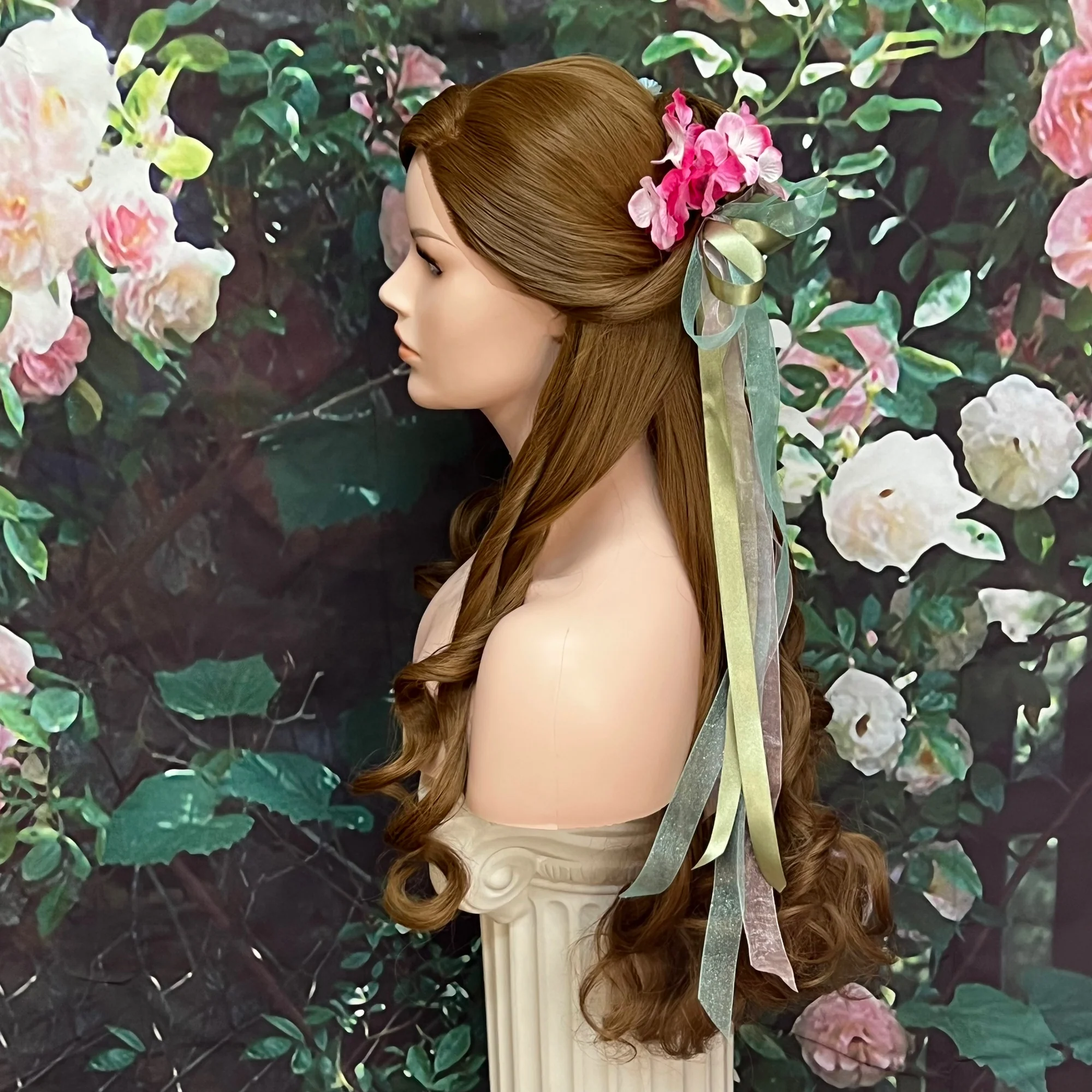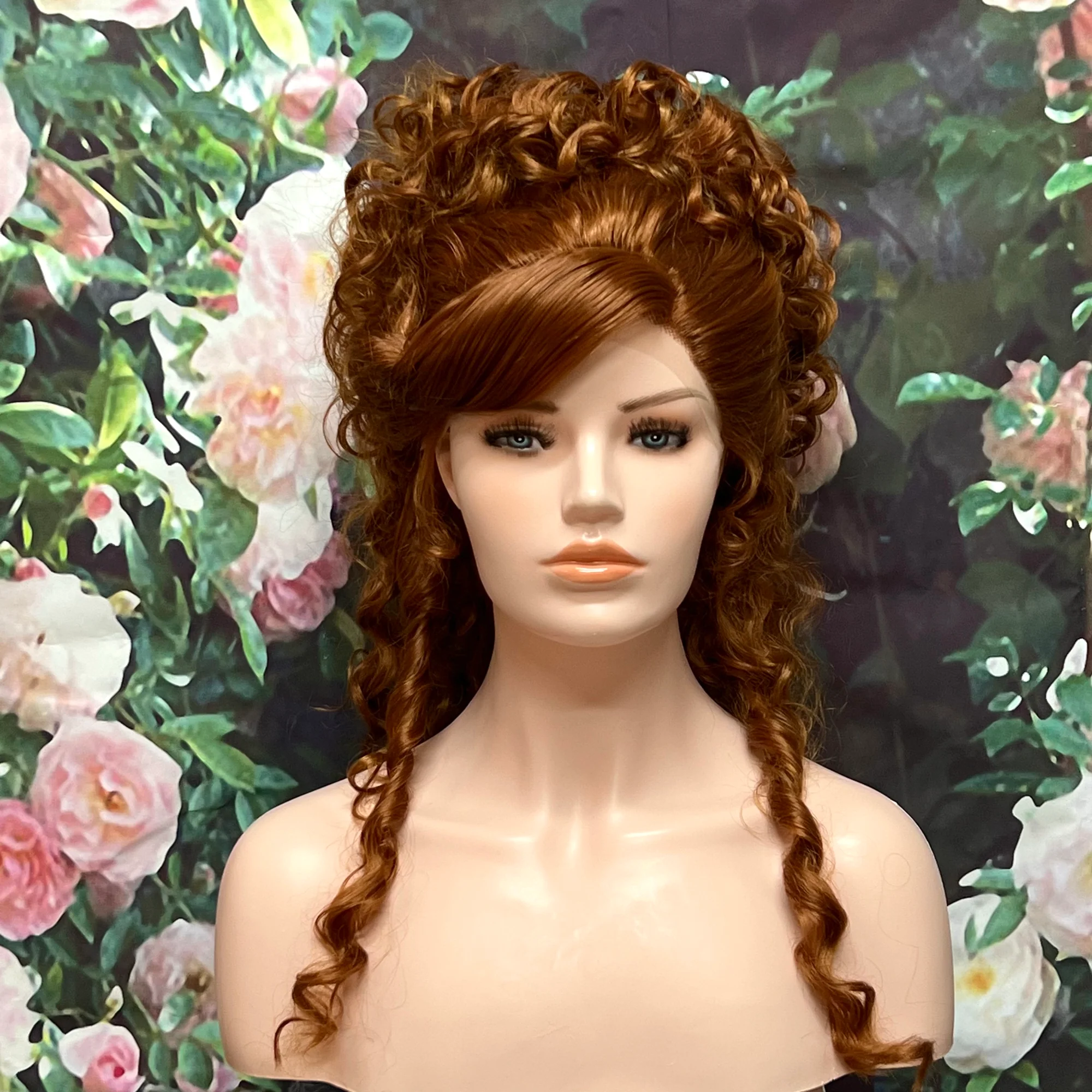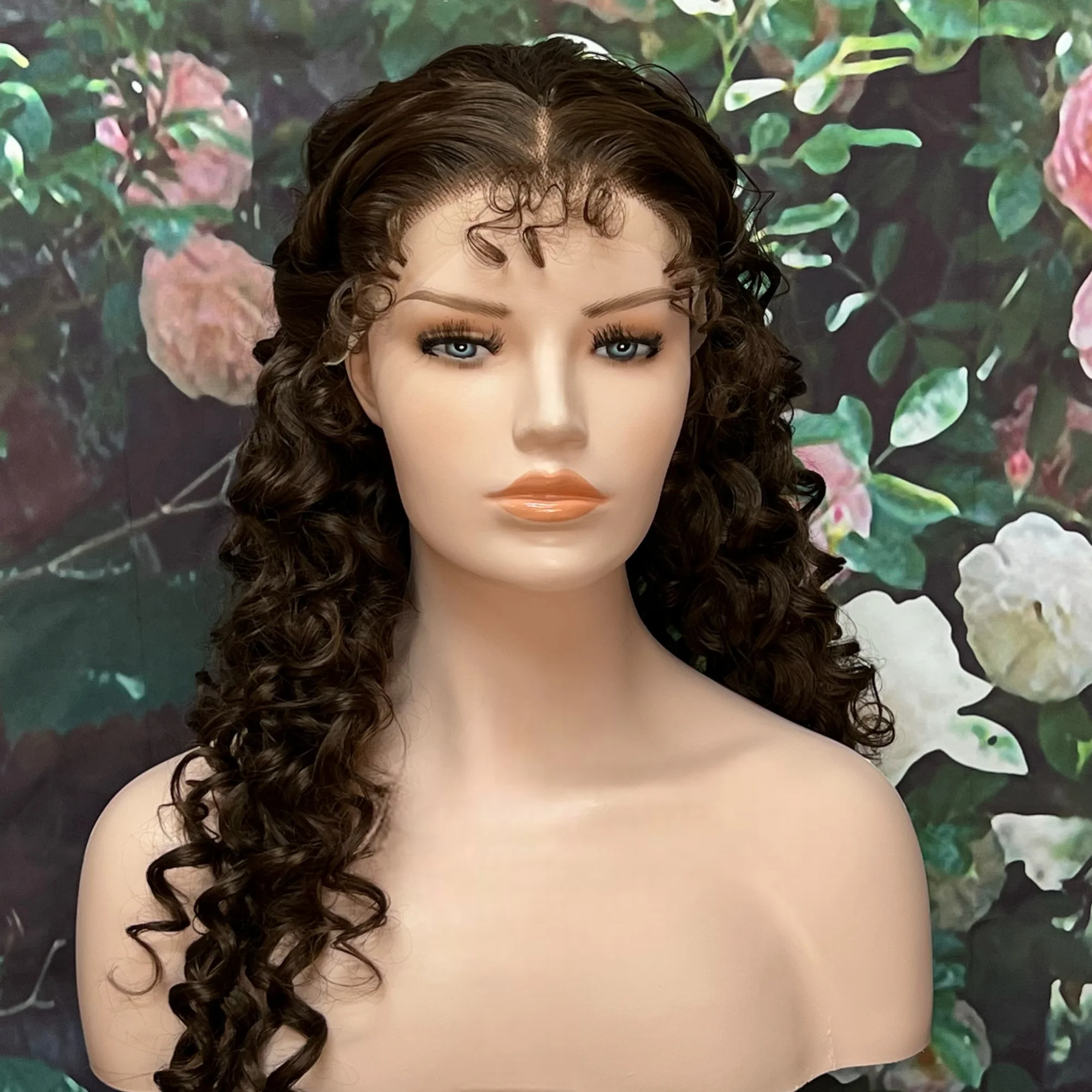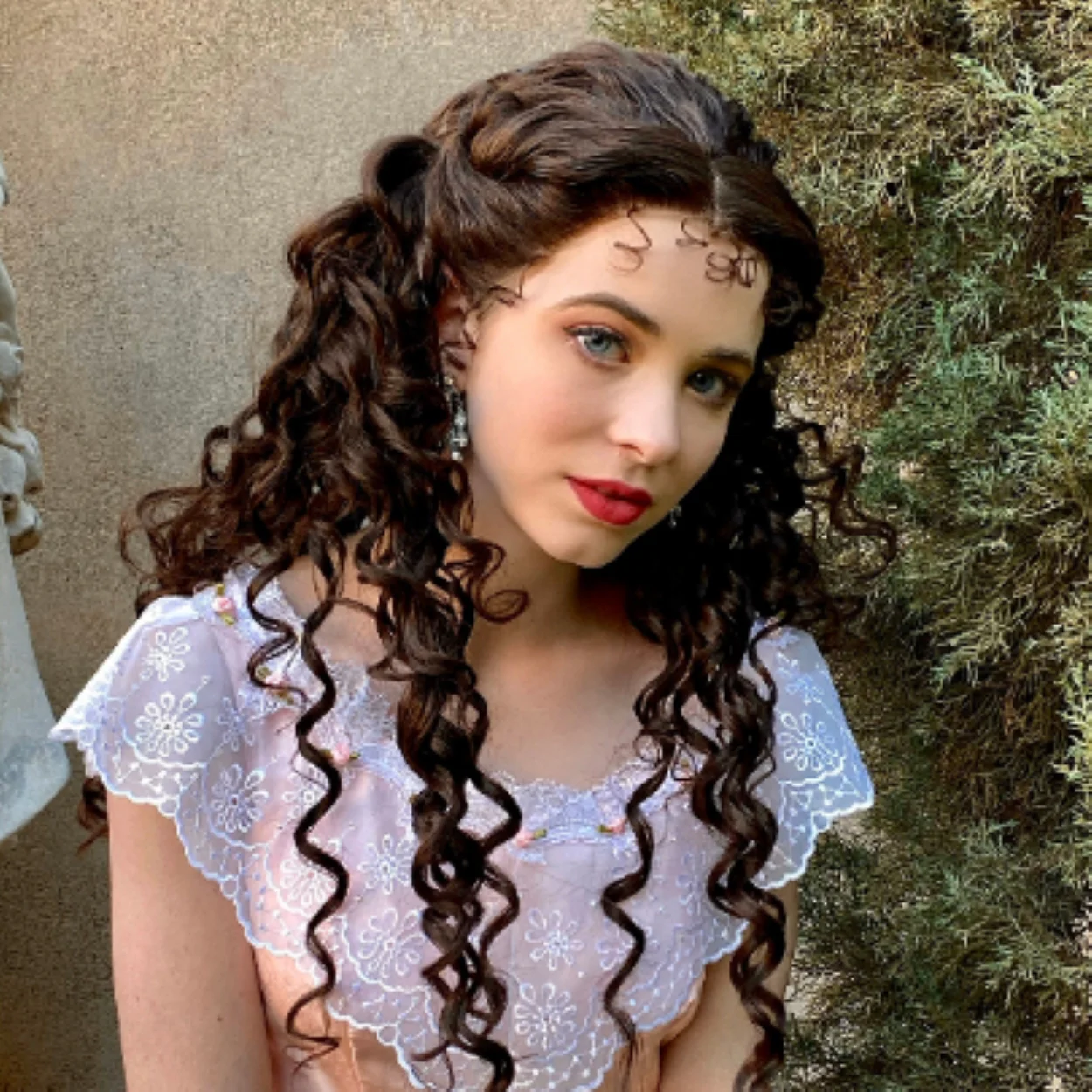
Unraveling the Truth: 18th Century Wig Wearing
The Symbolism of 18th Century Wigs
In the 1700s, wigs weren’t just fashion. They symbolized power, wealth, and social rank. The bigger and more lavish the wig, the higher the status. This culture began in France and spread across Europe. Royals and aristocrats were first to wear these hairpieces. Why did they wear wigs in the 1700s?They showed off sophistication and elegance. Commoners followed, hoping to mimic high society’s look. Gradually, wigs reflected one’s position in the societal hierarchy.
Wigs also symbolized the changing times. They became a key element in defining the Baroque and Rococo periods. The French court’s fashion choices were especially influential. Wigs were part of a wider movement of extravagance and opulence. They represented the peak of personal grooming and style. But, their symbolism wasn’t only positive. Over time, they also came to represent vanity and excess.
Wigs had practical uses too, which overlapped with their symbolism. They covered hair loss from disease or aging. They made grooming simpler during times when hygiene was a struggle. Despite their practicality, the meaning behind wigs was undeniable. They portrayed an image of the wearer as wealthy, well-bred, and up-to-date with fashion trends.

The Origins of Wig Popularity
The trend for wearing wigs began in the 17th century. Why did they wear wigs in the 1700s?Baldness was seen as a sign of weakness and loss of status. This perception, coupled with the syphilis epidemic, stirred a drive for artificial hair. Syphilis treatment often led to hair loss, urging the afflicted to cover up the shame. King Louis XIV of France lost his hair early. His solution was wigs, which sparked a trend across Europe. King Charles II of England followed suit, as did their courtiers. The result was a flourishing fashion that permeated society. From royalty to the merchant class, wigs were the in-thing. This boom in popularity made wigs a symbol of wealth and power. The cost of wigs put them out of reach of common folk.
They remained a preserve for the affluent, displaying social prominence. Despite common beliefs, not all notable figures wore wigs. George Washington, for instance, preferred to powder his natural red hair. Wigs offered a convenient way to maintain a presentable appearance. They were seen as practical, yet hedonistic, accessories of the upper classes. As time progressed, so did the reasons for wearing wigs. They shifted from a need to conceal disease to a desire to distinguish oneself socially. The white hair of wigs and powdered heads became a mark of refinement. Through form and fashion, the wig became an inextricable part of 18th-century attire.
The Rise of the Peruke: From Kings to Commoners
From royal crowns to common heads, the peruke, or wig, climbed the social ladder quickly. Why did they wear wigs in the 1700s?Initially, France’s King Louis XIV sported elaborate wigs to hide his baldness. Soon after, perukes became a hit among European nobility, signifying high status and fashion sense. Not just a royal trend, wigs trickled down to society’s upper echelons, becoming accessible to wealthier commoners too.
With a hairpiece for every purse, a rivalry of riches unfolded. The wealthiest flaunted heavily adorned, costly wigs, underlining their power and prosperity. For the less affluent, simpler yet stylish wigs were a mark of aspiration toward gentility. Wigs evolved from exclusive regal reserve to a broader class symbol, embodying the wearer’s societal ambitions. In this era, hair was not merely a strand but a statement, and wearing a wig spoke volumes of one’s social goals and standings.

Practical Purposes: Wigs as a Solution to Baldness and Hygiene
In the 1700s, baldness was a common issue. Many faced it due to syphilis and aging. Wigs offered a neat fix to hide hair loss and maintain one’s standing. They also served hygiene purposes. At that time, personal cleanliness was hard to keep up. Wigs simplified grooming routines in an age where regular washing was difficult.
Why did they wear wigs in the 1700s?Wigs were more than just a cover for baldness; they kept heads lice-free. Shaving one’s head and wearing a wig was a cleaner option. This practice prevented the spread of lice that were rampant back then. People often sent wigs to wigmakers for cleaning and delousing. This made wigs a sanitary accessory of the elite.
They also helped with scent control. Personal hygiene products were scarce then. Wigs were often laced with pleasant fragrances to mask body odors. This made wigs a dual-purpose solution. They enhanced appearance and also helped manage personal odor.
In conclusion, wigs were practical in the 1700s. They dealt with hair loss and cleanliness issues. They also made grooming simple, masking odors with scents. This practical use elevated wigs beyond vanity. They became essential items in the society of that time.
Fashion Statements and Status Symbols
In the 18th century, wigs were major fashion statements. They symbolized one’s social status and wealth. Large, elaborate wigs often adorned the heads of the elite. These hairpieces not only showcased their fine taste but also their affluence.
Wigs became must-have accessories for the fashionable. Not just in France, but across Europe. With styles named after victories or cultural events, they made bold statements. As such, wigs were more than hair solutions. They were vital for maintaining one’s image in the public eye.
The size and style of a wig could reveal much about a person. A large, intricately styled wig usually meant high social rank. Smaller, less ornate wigs often indicated middle-class status. Thus, wigs were a visible hierarchy, with size and complexity mapping wealth.
For men, the wig became an essential part of their attire. From kings to judges to merchants, wigs marked their professional and social identity. Women, too, embraced wigs, but with a different emphasis. Their wigs shifted from modesty to grandeur, reflecting changing beauty norms.
Why did they wear wigs in the 1700s?Wigs also served as a means for individuals to follow and show support for cultural trends. Sporting a wig similar to that of a beloved leader was common. This signified alignment with certain political or social circles.
Ultimately, the link between wigs and status was so strong that it led to the coining of terms like ‘bigwig’. This referred to someone of great importance or high social standing. The steep cost of fine wigs meant they were reserved for the few. These ‘bigwigs’ displayed their prominence every time they donned their elaborate hairpieces.
In essence, every wig told a story. A story not just of fashion tastes, but also of societal roles and ambitions.

Women and Wigs: From Modesty to Extravagance
Initially, wigs for women were modest and practical. They helped hide hair loss and maintain personal cleanliness, much like men’s wigs. Early on, simple hairpieces complemented women’s natural hair. Over time, however, these wigs evolved. They became grander and more elaborate. This change mirrored the societal shift from modesty towards openness and display of affluence.
In France, women’s wigs became especially extravagant. They displayed wealth with towering constructions adorned with jewels, feathers, and even model ships. These ‘pouf’ hairstyles were seen at the French court, becoming a trend across Europe. A famous wearer was Marie Antoinette. Her lavish ‘coiffure à la Belle Poule’ showcased her social status in a big way.
Women’s wigs were not just about covering up flaws. They were also about making bold fashion statements. They communicated wealth, taste, and sometimes political allegiance. While men’s wigs hinted at their profession or rank, women’s wigs spoke volumes of their husband’s or family’s wealth. These wigs became so pivotal that they often dictated the fashion for the entire outfit.
Yet, as the 1700s came to a close, the extravagance of women’s wigs was criticized. They came to be seen as symbols of the excesses of the upper class. In revolutionary times, simpler hairstyles gained favor. This trend marked the beginning of a return to more natural hair and away from exaggerated wig styles.
The Demise of Wigs: Politics, Philosophy, and Hygiene
As the 18th century waned, so did the popularity of wigs. Why did they wear wigs in the 1700s?A shift in social consciousness and values changed the tide. Enlightenment thinkers emphasized rationality and natural beauty, spurning the ostentation of elaborate wigs.
Politics and the Decline in Wig-Wearing
Political change played a role in the wigs’ downfall. Revolutionaries in France fought against excess and aristocracy. Wigs, as symbols of the upper class, became targets. People saw them as relics of a corrupt and outdated social order.
In England, Parliament’s Hair Powder Act of 1795 taxed hair powder. This act made wigs expensive to maintain. The tax prompted many to stop using hair powder, leading to a decline in wig popularity.
Philosophical Shifts
The Age of Enlightenment brought new ideas about self and society. Personal vanity was less admired. Simplicity and intellectualism became the new vogue. Men of education and status started to prefer natural hair over the artificial grandeur of wigs.
Improvements in Hygiene
Advances in hygiene furthered the demise of wigs. As people learned more about health, the dirty, lice-ridden aspect of wigs was less appealing. Regular hair washing became the norm, making the wig less necessary as a protective layer.
The Shift to Practical Hair Management
With better hygiene, easy solutions for hair problems arose. People could care for their hair without the hassle of wigs. Shorter haircuts became popular. The long, powdered styles of the past fell out of fashion.
In summary, politics, changing philosophy, and better hygiene practices led to the end of 18th-century wig-wearing. What was once a staple of status and style became a sign of the old guard, making way for a new era of naturalism and practicality.

The Lasting Impact: Wigs in Modern History and Culture
The influence of 18th-century wigs stretches into today’s world. While not common in daily wear, wigs hold a firm place in certain professions and cultural practices. Judges and barristers in British courts, for instance, still don ceremonial wigs. This tradition links them to a long history of legal practice. In theater and cinema, wigs are essential. They help actors transform into characters from different eras. The 1700s wig style often appears in period dramas on screen. Historical reenactments and themed events also keep the wig tradition alive.
Wigs in fashion have seen a resurgence too. Fashion shows occasionally spotlight wigs, reviving the extravagant styles of the past. Even in daily life, wigs offer a way for people to change their look without altering their natural hair.
From a practical standpoint, wigs provide a vital solution for those experiencing hair loss. They bring comfort and confidence to individuals. For those undergoing medical treatments like chemotherapy, wigs have become an important part of recovery and self-image.
Beyond function, wigs symbolize shifts in cultural norms. Trends in celebrity culture show wigs as a means of expressing creativity and individuality. Social media influencers and stars use wigs to craft and project their brand identities. This new take on wigs echoes the past. It illustrates how fashion can serve as an armor and a statement, a reflection of both personal and social identity.
The 18th-century wig may not dominate as it once did. Still, its legacy endures in modern fashion, culture, and professional attire. Wigs have transformed from symbols of status to versatile tools in self-expression and practicality. Their historical significance lingers in every strand.

